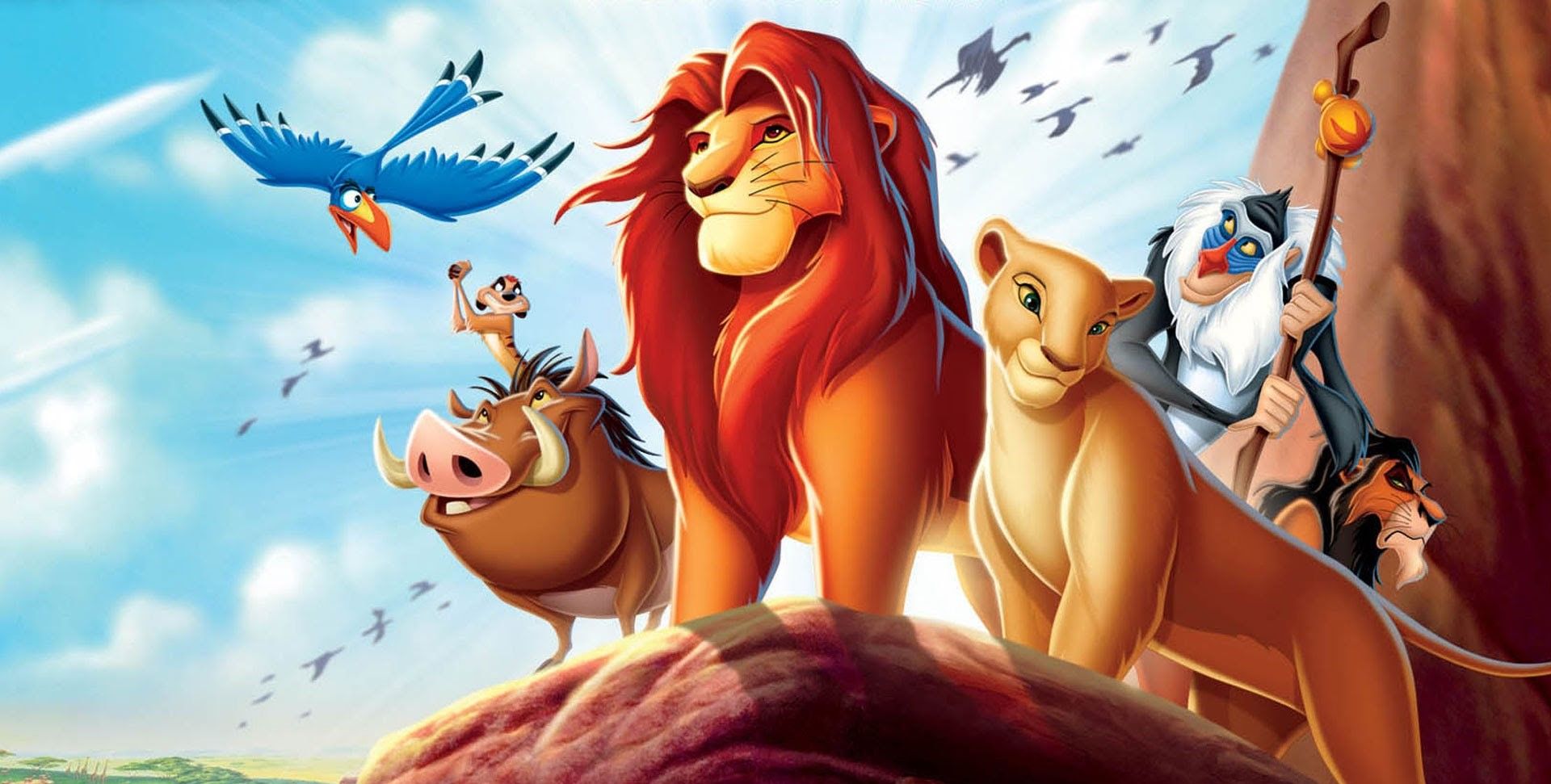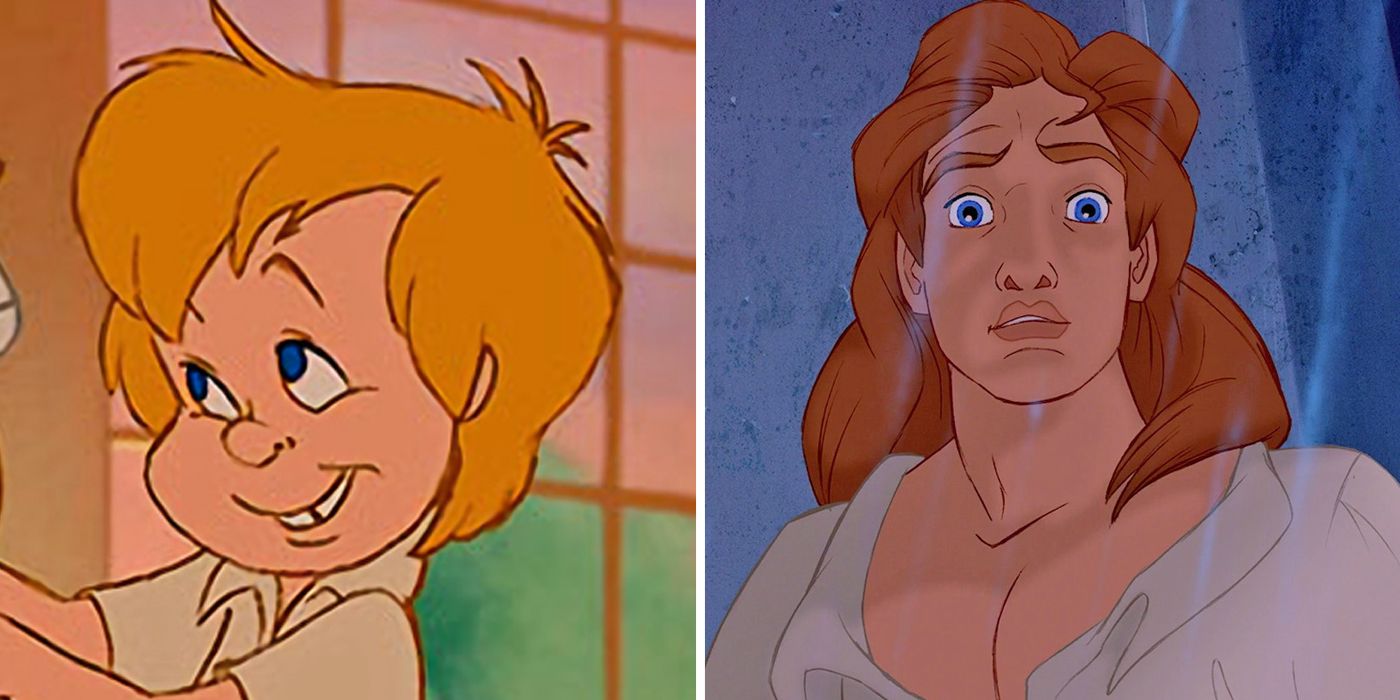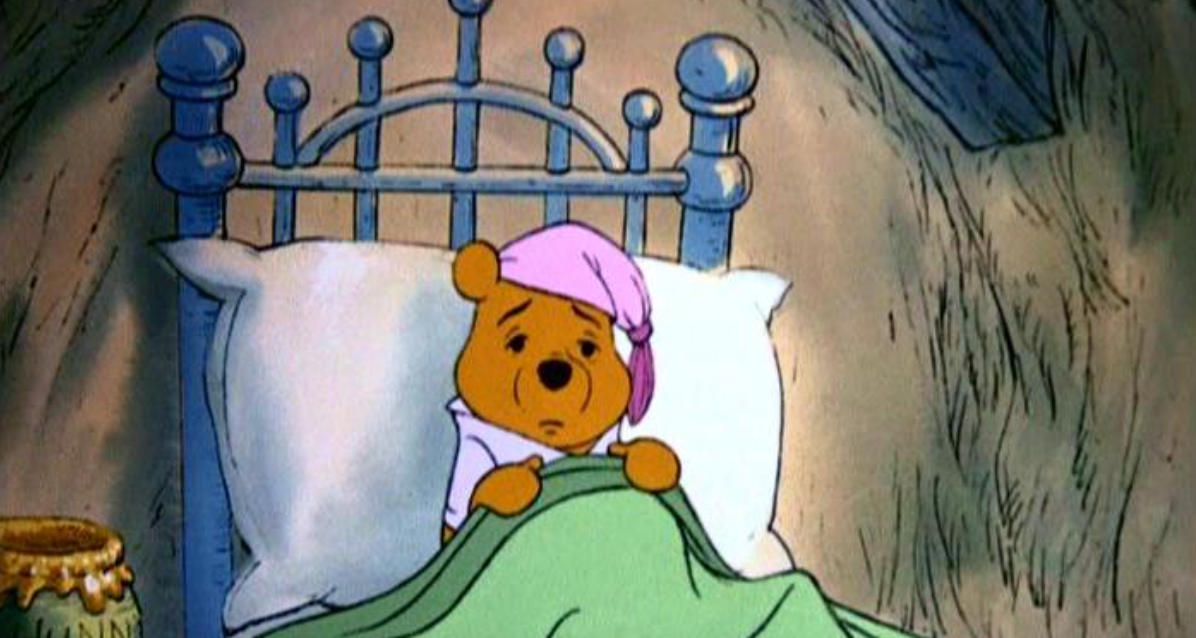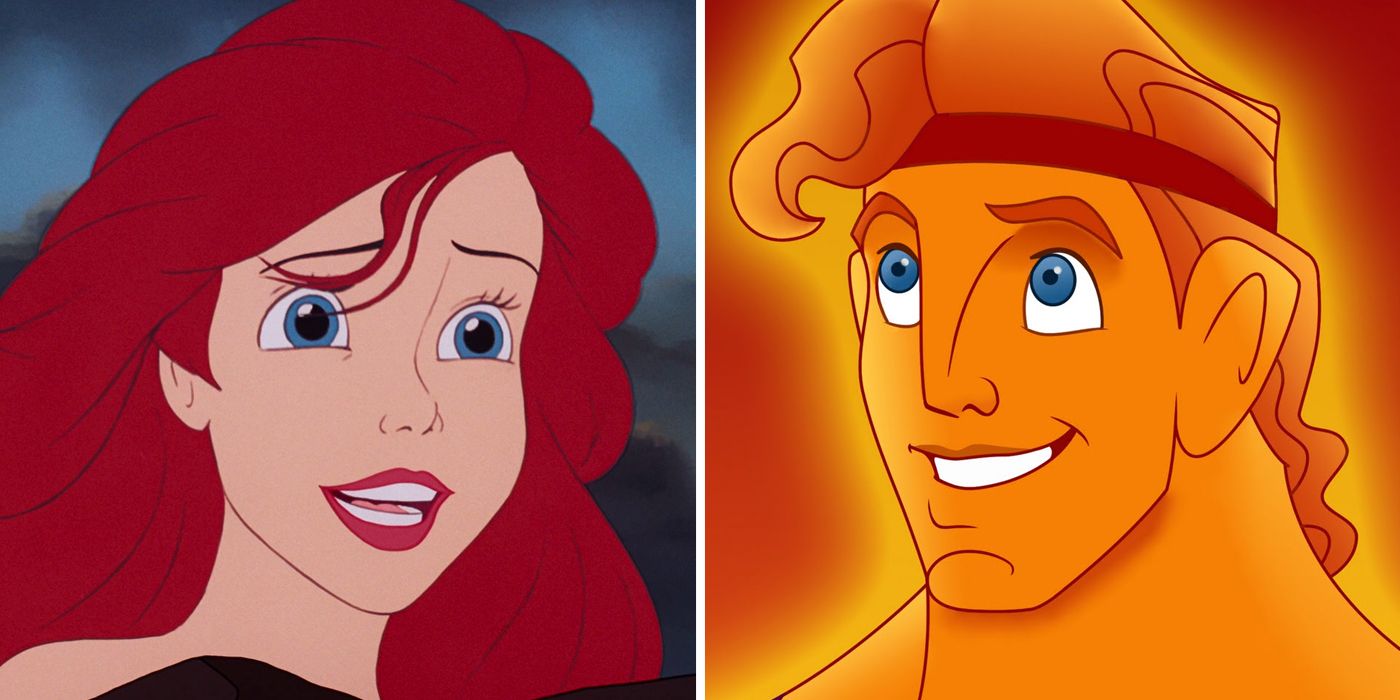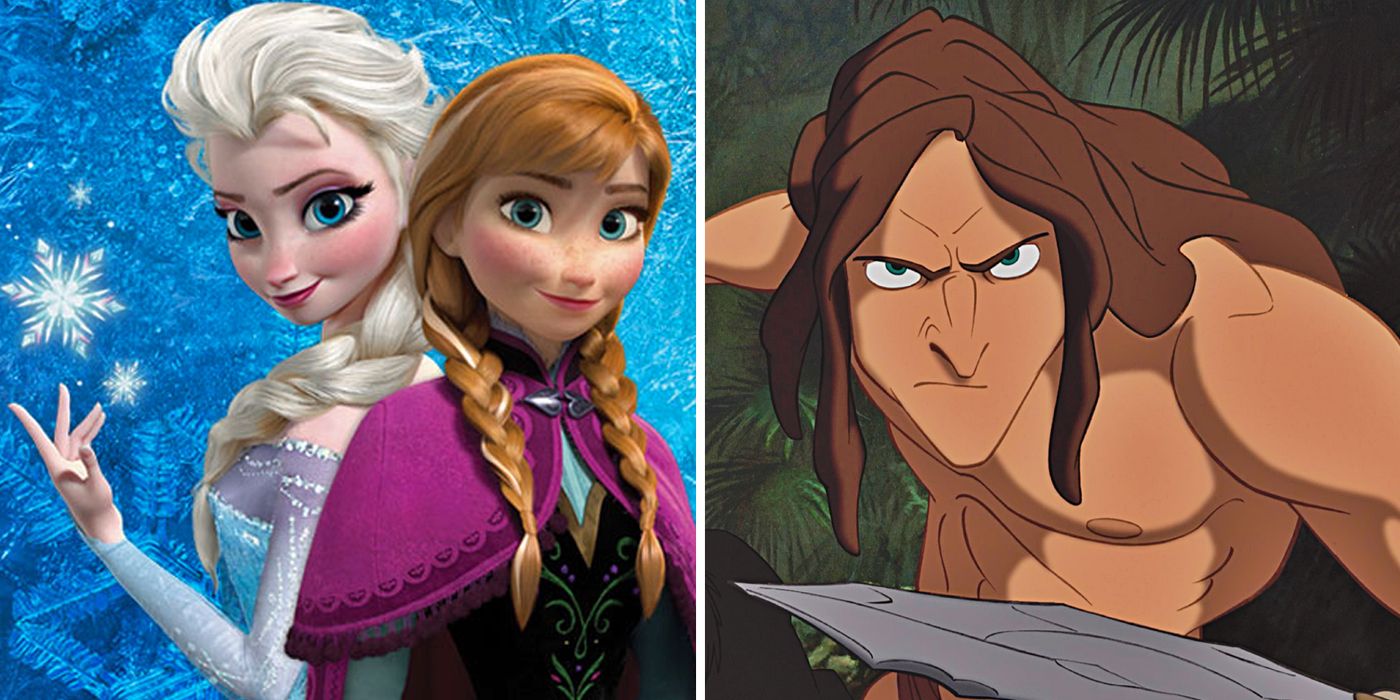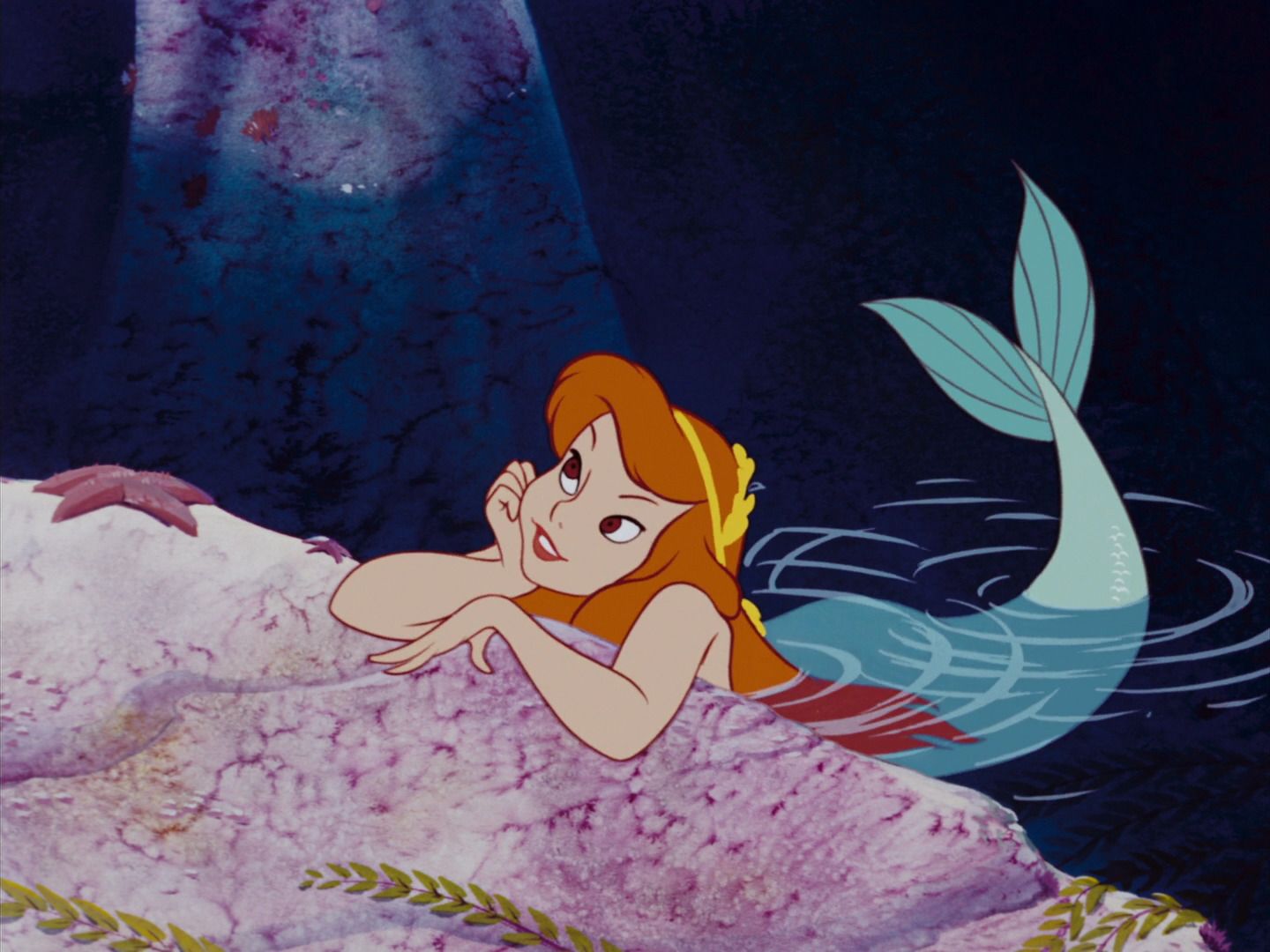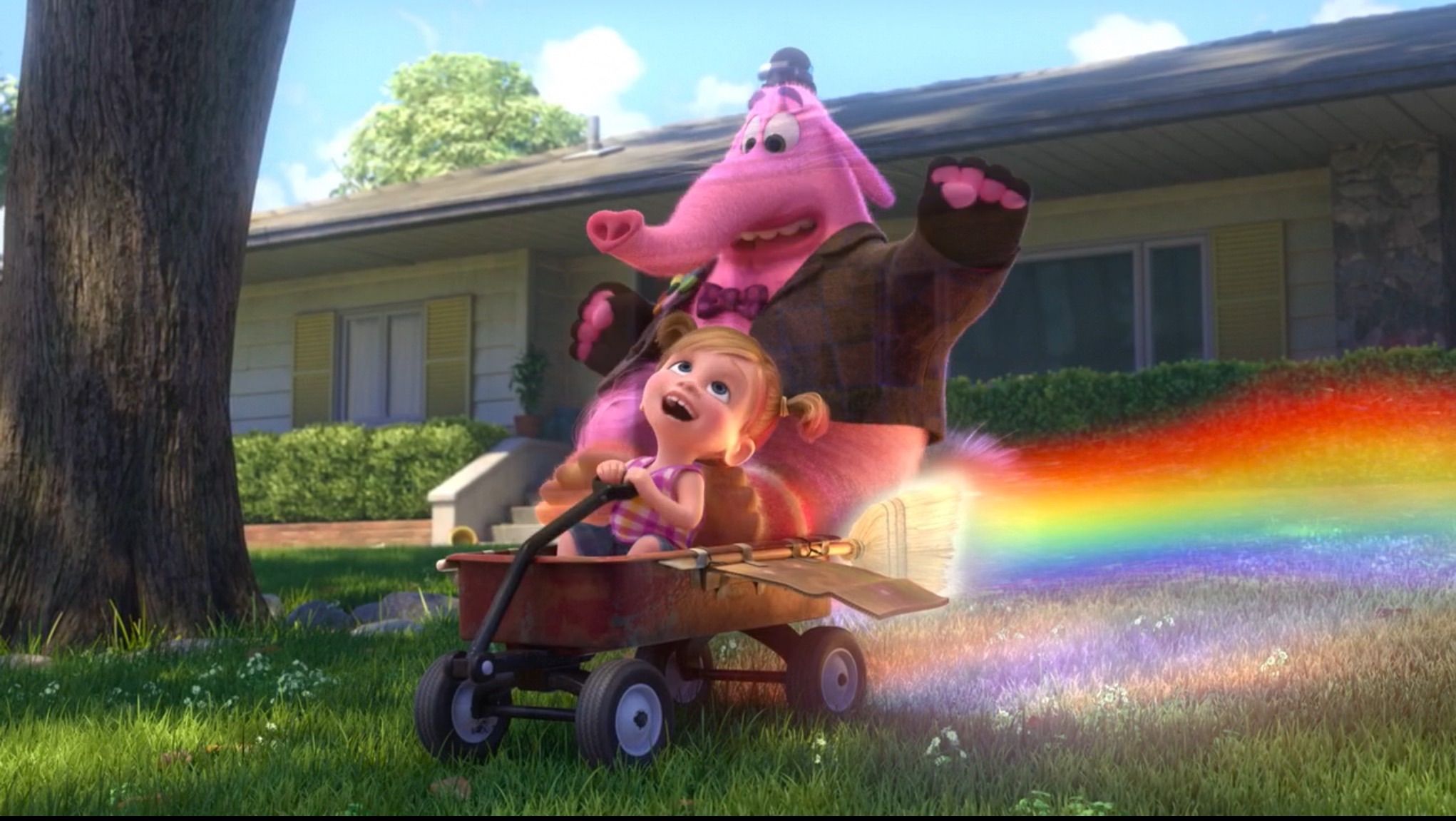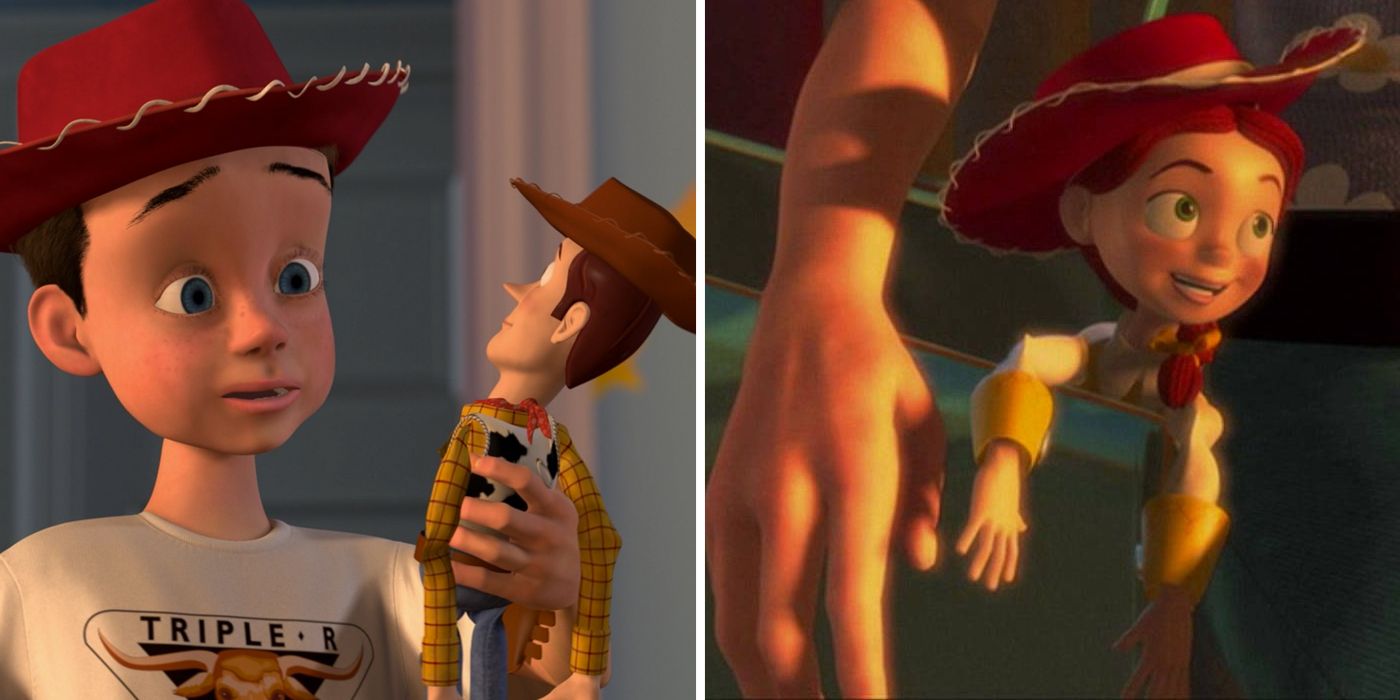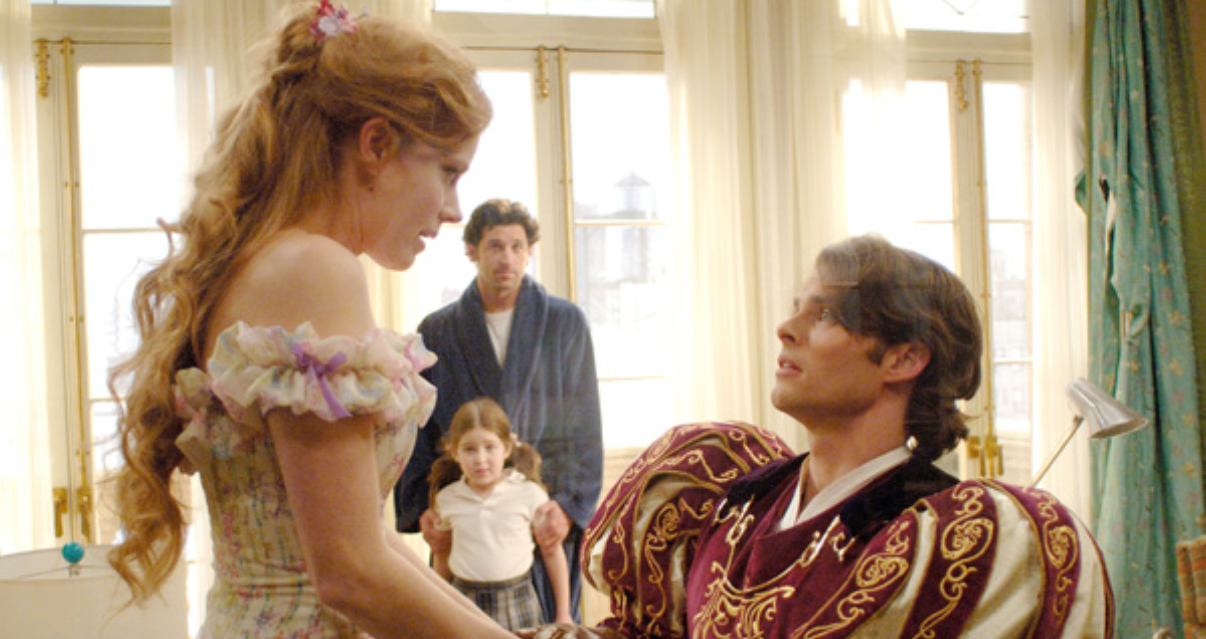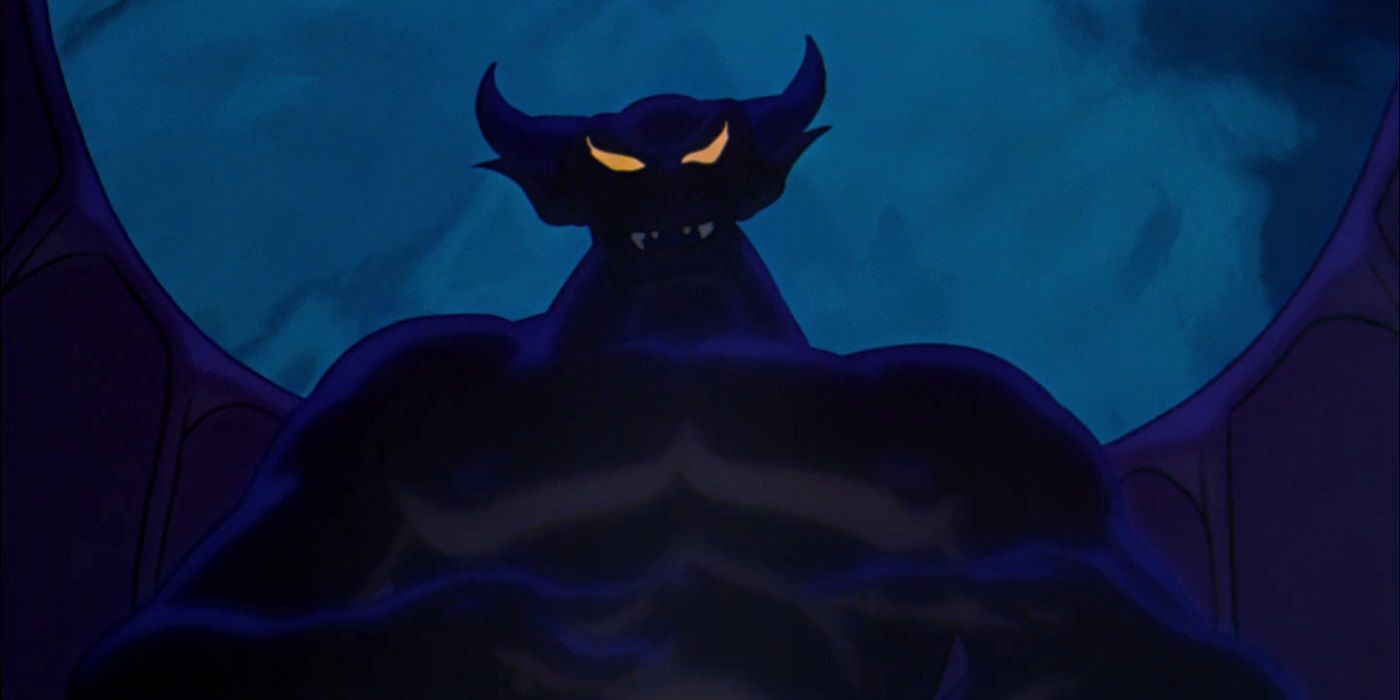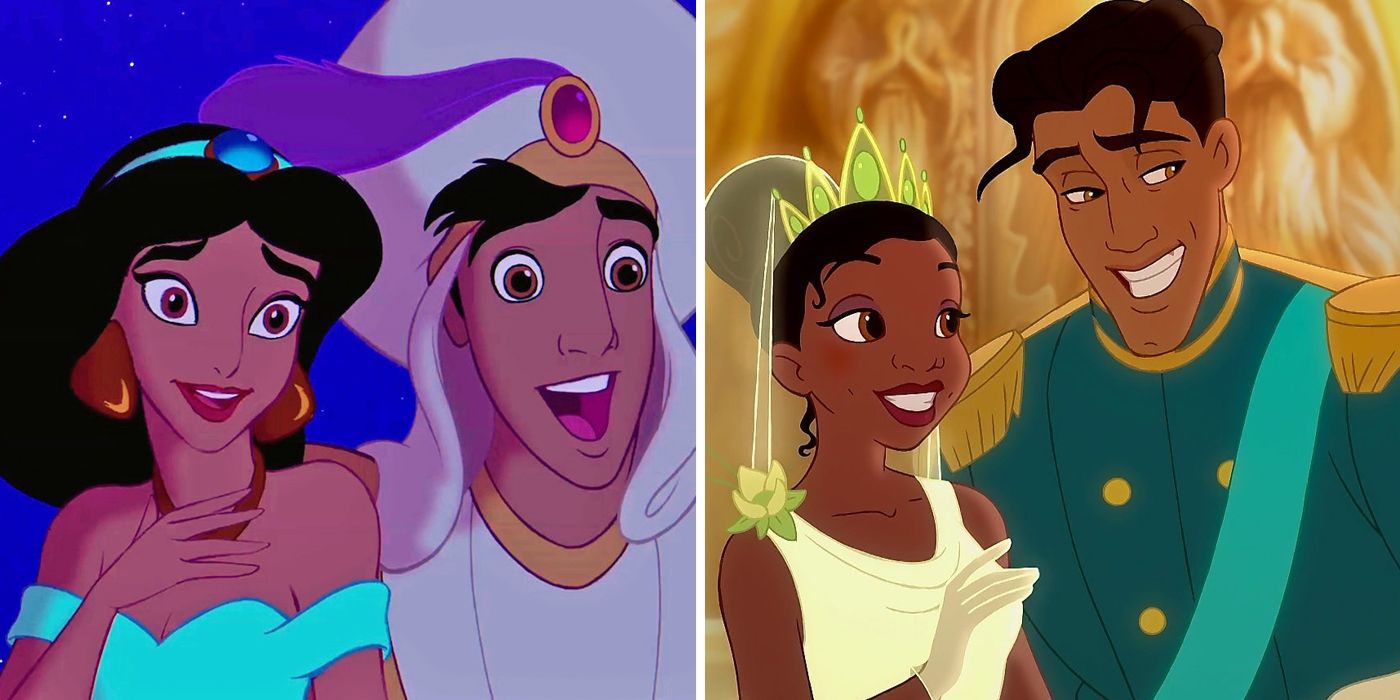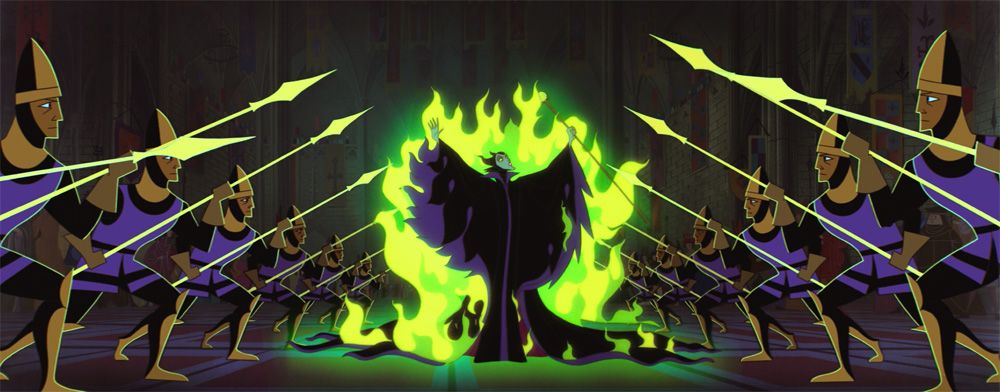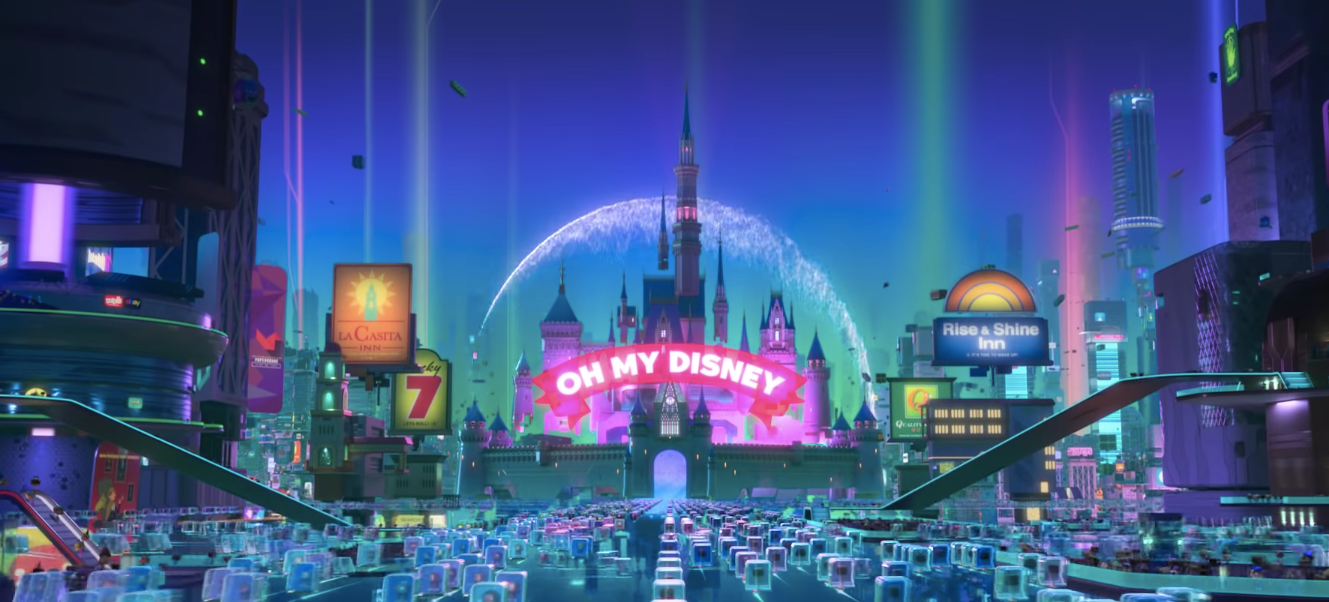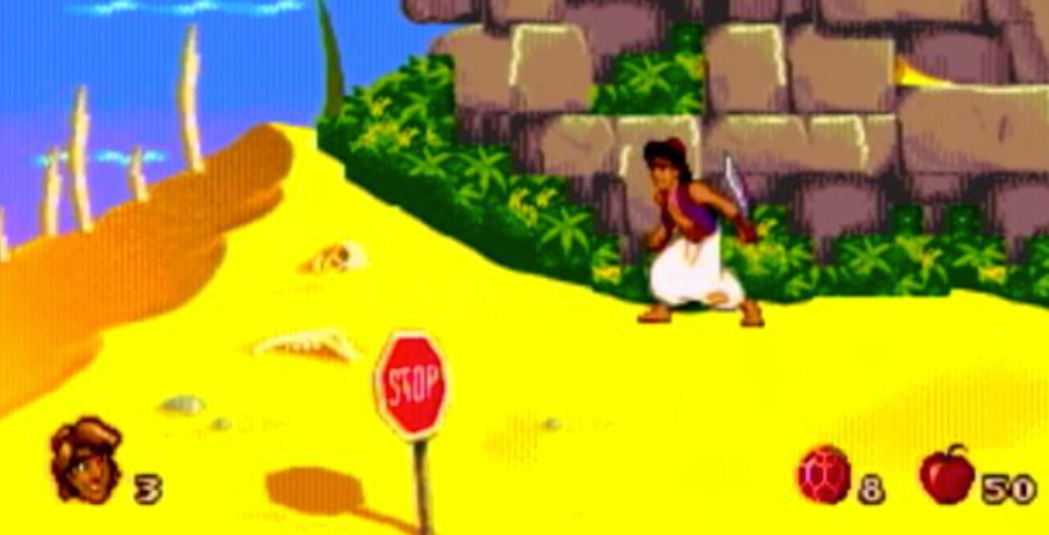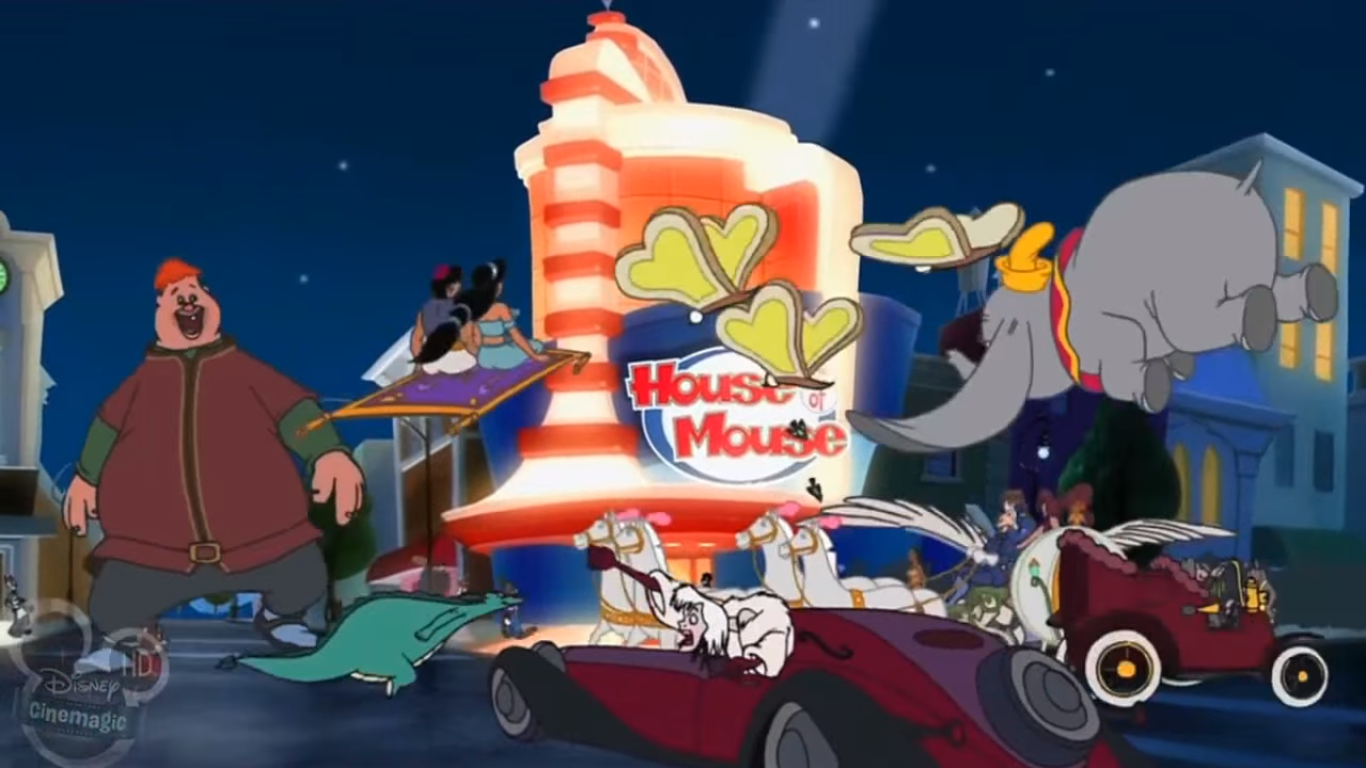Disney has spent decades shaping the childhoods of generation after generation, crafting timeless stories that have stayed with us well into adulthood. But, while the cute critters, warbling princesses and cackling witches are stuck in our heads forever, we also can't help looking back on some of the House of Mouse's animated classics with a bit more scrutiny and wonder if there's more going on than meets the eye. Easter eggs have become a pretty standard occurrence across all forms of media, and Disney and Pixar films are no exception. You can find callbacks to both companies' past works everywhere from hidden cameos, name-drops and tiny background details that can only be spotted with a strategic pause. References like these have naturally led fans with overactive imaginations to piece together shared universe (or even multiverse) theories.
Disney's brand is infamous for being tooth-achingly saccharine, which makes the moments of darkness in its output all the more shocking. There's barely a Disney protagonist around who didn't suffer a parentless, traumatizing childhood, and fans also have one or two wild ideas about the identities of certain unnamed killers, or even how certain characters could secretly still be alive. When it comes to fan speculation, some ideas are more plausible than others, but if the reasoning is solid, you'd be amazed at how logical some of the most ludicrous theories -- like these ones -- can seem. Prepare to never watch your favorite animated Disney movie the same way again!
15 GASTON SHOT BAMBI'S MOM
When we talk about tragic moments from pop culture that wrecked our childhoods, Bambi is top of everyone's list. Based on the 1923 children's book, Bambi, A Life In The Woods by Austrian writer, Felix Salten, the 1942 film adaptation was a box office failure at the time, though by now its considered to be Walt Disney's masterpiece. Of course, the simple answer to "Who shot Bambi's mom?" is that it was Man. Not a man, but the metaphorical concept of Man preying on nature. But, metaphors just aren't that fun, are they? That's how, for some fans, the question "Who shot Bambi's mom?" has become the "Who shot Mr. Burns?" of the Disney world.
Staying within the Disney universe, the most obvious culprit is the famed hunter from Beauty in the Beast who "uses antlers in all of his decorating." Plus, only a cold-hearted scoundrel like Gaston could make such an adorable animal an orphan. The only issue is geography. Bambi is set in North America while Beauty and the Beast takes place in France. One fan theory has suggested that Beauty and the Beast could actually be set in New France (Quebec), but a more likely solution is that the ex-soldier (as was established by the 2017 live-action remake) simply traveled to the New World to snag some foreign home decor and sailed back home. If the big, manly boot fits, right?
14 CHIP IS THE BEAST'S SON
Sticking with Beauty and the Beast, there are a lot of lingering questions about this 1991 Oscar-winning movie. Just how old was the Prince when he was cursed? Why did only some of the enchanted objects in the castle have faces? And what's the deal with Chip? Chip, the little cracked teacup, is the youngest cursed member of the Beast's household and the apparent son of Mrs. Potts (and sibling to scores of unnamed other teacups, but that's a head-scratcher for another time.) It doesn't really matter to the story who Chip's absent father is... or does it?
Inconsistencies in the film's timeline have fuelled a popular theory that Chip is the illegitimate heir to the throne.
The film tells us that the Beast must find true love by the age of 21 to break the spell, a spell that Lumiere confirms has lasted for 10 years before Belle showed up. Due to his appearance in the backstory, fans reckon the Prince must have been 11 years-old when he was cursed (explaining why he was so bratty) but the portrait discovered by Belle shows a handsome ADULT. Cracked's Amanda Mannen has a scandalous explanation: the Enchantress was the Prince's mistress who bore his child and was sworn to secrecy. The scorned lover cursed him and his servants out of spite, including their son, Chip, who was adopted by Mrs. Potts to cover it all up. Not convinced? Just look at the uncanny resemblance between the supposed father and son above.
13 WINNIE THE POOH IS ALL A DREAM
From The Wizard of Oz to LOST, the "it was all a dream..." twist has become an often unwelcome cliche in storytelling. But, sometimes it can give a simple story new depth. A. A Milne's beloved children's stories captured the joy of doing "Nothing," coming to an end in The House At Pooh Corner in which Christopher Robin has to stop doing "Nothing" and go to school. Pooh and the rest of his cuddly pals fit right into Disney's ranks, but what if there's more to the Hundred Acre Wood than we realize? Because of the rose-tinted view of childhood that Milne's world takes, some fans think the whole world is a fantasy.
Not just a fantasy of the author's, but of the stories' human protagonist, Christopher Robin -- laying in a coma dreaming of the golden years of his youth. A darker version of this adds that he's housed in a hospital for the mentally ill under heavy sedation, with the characters of the Hundred Acre Wood being ciphers for other patients with various disorders, with Tigger -- hyperactive and impulsive -- manifesting as a Lovecraftian Eldritch Abomination, a creature who exists to disrupt the laws of nature and reality. Think about Tigger's role in the stories: is he causing harmless fun or inciting carefully-controlled chaos to feed off of vulnerable people's energies?
12 HERCULES AND ARIEL ARE RELATED
Of all the proposed Disney family trees that are going to come up on this list, this one has some of the strongest canonical evidence. One is the royal daughter of the King of the Sea, and one is the superpowered child of the Greek god of all gods. The Little Mermaid and Hercules are two movies separated by eight years in our time, and likely a few hundred at least in-universe time. This theory, popularized by YouTube's Film Theorists, claims that despite the big time difference, the mermaid who found her sea legs and the mortal hero who reclaimed his godhood are related.
This theory claims that Hercules and the Little Mermaid could be first cousins.
How? It's actually super simple. The Hercules TV series revealed that King Triton is the son of Poseidon and the grandson of Neptune. In Greek mythology, Poseidon is the brother of Zeus, making Ariel and Herc first cousins once removed. Gods are immortal, which explains how the familial link stretches so far. Another more detailed theory speculates that the reason Poseidon is absent on Mount Olympus during Hercules is because he fell for Athena -- Ariel's mortal, mermaid mother -- and gave up his godhood to live with her under the sea (much like Hercules does for Meg) channelling his powers into a trident and taking on a new identity. This would make Ariel and Hercules direct cousins.
11 TARZAN IS ANNA AND ELSA'S BROTHER
We know what you're thinking. Anna and Elsa are the princesses of a snowy, Scandinavian kingdom and Tarzan was raised by apes in the jungles of South America. There's no way there could be any connection between the trio, especially one as close as brother and sisters. Well, hold on because we're just scratching the surface with this one. This theory doesn't just come from the mouths of fans, it comes straight from the architect of the canon. In a Reddit AMA with Frozen directors Chris Buck and Jennifer Lee, the pair were asked: "Where were the King and Queen planning to go when they lost their lives?"
Lee's response sent the Internet into a frenzy: "A wedding. According to Chris, they didn't die on the boat. They got washed up on a shore in a jungle island. The queen gave birth to a baby boy. They build a treehouse. They get eaten by a leopard..." Sound familiar? That's because it's the opening for Tarzan, of which Buck was also a director. It doesn't stop there, either. Whose wedding were the King and Queen headed to? How about Flynn and Rapunzel's in neighboring country Germany, who we later see as guests at Elsa's coronation? And their ship could have sunk near Denmark, the setting for The Little Mermaid, providing the wreckage that Ariel searches for treasure in. It all adds up!
10 CAPTAIN HOOK KILLED ARIEL'S MOM
Absent parents are a fixture in the Disney canon because, well, it just makes things a bit more interesting for our heroes and heroines. The question of Ariel's mother has been a hot topic for years, partly because of the sheer number of sisters she has, and partly because of the fan-favorite idea that the manipulative sea witch, Ursula, could be King Triton's bitter ex-lover. The most likely answer is that Ariel's mom passed on, but if this is the case, then how? This theorist has an idea. The Little Mermaid is thought to take place near Denmark because of the nationality of the original fairy tale's author, Hans Christian Andersen, and the country is home a world-famous statue of the character.
Denmark is fairly close to the United Kingdom, the setting for Peter Pan, with Neverland likely floating somewhere in between.
Peter Pan famously features mermaids that are extremely close in design to those in The Little Mermaid, including one with a green tail and red hair. Disney's Jake and the Neverland Pirates revealed her name to be Queen Coralie, but because of the clear family resemblance to Ariel, the theorist believes her real identity is Ariel's mother, Athena. Either way, King Triton and Queen Coralie? You can see why they'd be a match. Queen Coralie and Captain Hook are straight up enemies in the series, and we know from Peter Pan that pirates aren't adverse to hunting down mermaids.
9 BING BONG WORKS FOR MONSTERS, INC.
To get your head around this one, you need to first be familiar with the Pixar Theory. The Pixar Theory is the idea that every Pixar movie exists in one, unifying timeline, starting with Brave in the 14th/15th century and going all the way up to 4500-5000 AD in Monsters, Inc. The timeline was put together by Pixar fanatic Jon Negroni in 2013, whose mission was not only focused on how the studio's disparate cinematic works fit together, but why. (You can read it all here, but the TL;DR version is that Monsters, Inc.'s Boo is secretly the most important character in the whole Pixar universe.)
So, where and how does Inside Out slot in? Negroni reckons the clearest link is Bing Bong, Riley's beloved imaginary friend from her younger years. Because of the technology in the film's setting, Negroni places it just before Finding Nemo -- and before mankind ravages the Earth in Wall-E. The Pixar Theory claims that the doors the employees of Monsters, Inc. use to visit children are also time portals used to visit children of the past to harvest laughter energy for the future. What if Riley is on the company's list and Bing Bong is actually her appointed monster? That means only her memory of him disappears in Inside Out, while the real Bing Bong is off making another kid laugh.
8 WOODY AND JESSIE BELONGED TO ANDY'S PARENTS
Unlike the shiny, new space toy craze, the cowboy line that Toy Story's Woody and Jessie belong to are "legacy" toys. The first Toy Story movie, which was Pixar's debut feature in 1995, states that Woody and his human owner, Andy, go back further than any of his other toys, which is why he's such a firm favorite. (Well, until Buzz Lightyear shows up to throw a galactic spanner in the works...) The 2000 sequel expanded on this origin when Woody accidentally winds up in Andy's mom's garage sale. She shuts down Al's offer to buy the doll by explaining that he's been in the family for years.
From the "Woody's Roundup" show and Al's knowledge, we learn that Woody and Jessie were created in the '50s or '60s.
It stands to reason that Woody could have originally belonged to Andy's dad. There's even a theory that the little boy in "Woody's Roundup" is him, due to how similar he looks to Andy. Similarly, the little girl, Emily, who left Jessie by the roadside in that tear-jerker of a flashback could be Andy's mom. Their ages certainly make this possible, and there's a nice, cyclical ring to the idea of their toys meeting each other in the future. How do Jessie and Woody not remember any of this? Maybe toys get a factory reset when they change ownership.
7 ENCHANTED BREAKS THE DISNEY FORCE
Disney movies operate in fairy tale worlds in which true love conquers all and a "happily ever after" is just around the riverbend. Unless you're a villain... or Quasimodo. Anyways, thanks to the dimension-hopping set-up of 2007's Enchanted, one fan has put forward the idea that there's a certain force in the Disney animated world that ensures its inhabitant's lives turn out a certain way. This force is called "The Tradition," and unlike the unbiased Force that "binds and penetrates" folk in the Star Wars world, this one has an agenda. Whatever story the characters are in, The Tradition ensures they act in strict accordance to whatever that story demands.
You might think that this isn't so bad considering Disney hardly ever ends a story on a bad note, except it also means no-one has any free will. When Giselle falls into the real world in Enchanted, she falls out of The Tradition's grasp and out of love with Edward. She still feels echoes of its effect, which is why she's able to perform elaborate musical numbers in our dimension, but in the end, she decides to make her own destiny. Edward, on the other hand, chooses the Blue Pill. He returns to the animated world with Nancy in tow to give The Tradition the happy ending it craves -- explaining how the pair fell in love as soon as they crossed the portal's threshold.
6 THE CHERNABOG IS THE ROOT OF ALL EVIL
Fantasia remains something of an anomaly in a body of work filled with cookie-cutter confectionary. Other than its masterful blend of classical music and dazzling animation, it gave us one of the most terrifying Disney villains of all time: the Chernabog. These days we prefer our villains to come with a side-helping of sympathy or with motives that amount to more than just vanity or jealousy. Not so much in 1940.
The Chernabog was created to be Disney's purest incarnation of evil -- a clear stand-in for the Devil.
Theological belief puts the Devil at the heart of Man's desire to do wrong, and one theory thinks this is true of the Chernabog, too. Because he can only appear once a year -- and is weak to sunlight -- perhaps every Disney villain is just an extension of his will spreading beyond his own limited reach. There are also some fun theories surrounding his true identity. One fan thinks that, due to his size, immeasurable power and appearance, he could be an evil genie, with the mountain being his oversized lamp. Another theory reckons he could be Kronos (or Cronos,) the Greek Titan of time and father to Zeus. In mythology, he was dangerously mad, and the theory explains that Zeus was forced to seal him away -- as he does to the other Titans in Hercules -- in a separate, stronger prison. Kronos' annual antics in Fantasia allow him to feed off our souls to become even more diabolical.
5 THE DISNEY ROYAL FAMILY TREE
Something we rarely see in Disney movies is families spanning more than two or three generations at a time. In The Lion King, Mufasa eludes to the "kings of the past" watching down on Simba, but mystical vagaries like that are about as close we get. As we've seen on previous entries on this list, fans have found interesting ways to link far-flung Disney characters together, creating multiple possible shared universes. Few are as ambitious as this fan fiction story by Commander called "Fairytales," though. Ambitious in scope, "Fairytales" traces a royal bloodline from Aladdin to The Princess and the Frog.
One section of the tree begins around 1000 AD with Aladdin where Jasmine and Aladdin fleeing to Africa to escape the Crusades. Meanwhile, in Europe circa 1500 AD, Snow White and Prince Bertram have a daughter named Analiese. Analiese becomes the mother of Sleeping Beauty's Princess Aurora in France, who marries England's Prince Phillip. Their grandson weds Cinderella and their son becomes the cursed prince in Beauty and the Beast. Post-curse, he and Belle have a son who marries Eric and Ariel's Danish daughter, Melody. Four generations later, this bloodline meets Jasmine and Aladdin's, whose descendant has made it to America, resulting in the birth of The Princess and Frog's Prince Naveen.
4 MALEFICENT LIVES
Sleeping Beauty was only the studio's sixth feature-length animation (discounting anthology films), but Maleficent is a villain who has stood the test of time. Unlike the Evil Queen in Snow White and the wicked stepmother in Cinderella, Maleficent is an old-school baddie who oozes poise and power rather than become easily unhinged. Her considerable powers as a dark fairy made her a sizeable threat -- particularly when that size grew.
Not surprisingly, Maleficent met her doom by the end of Sleeping Beauty.
Or did she? One theorist has some pretty compelling evidence to suggest that Maleficent not only survived her battle with Prince Phillip but thrived after it. They argue that we only see Maleficent's costume, not her body, and if you pause the film at the right time you can see Phillip's sword turn black as he impales her. Hypothetically, her dark energy could have become sealed in the sword, waiting to be released as the Genie was from the lamp in Aladdin. Given that Sleeping Beauty takes place in the 14th century, the theory goes on to speculate that things like the Black Death and Hundred Years War could have been her doing upon escaping the blade, thirstier for revenge than ever before.
3 THE DISNEY UNIVERSE IS IN THE MATRIX
The worlds of Disney's animated canon are filled with magic, talking animals, witchcraft, spirits, genies, aliens and monsters, or in other words, fantasy of the highest order. More than that though, they're fantasies in which people's dreams nearly always come true (if they're true of heart, that is.) Because of this "happily ever after" cliche that we all know to be the Disney brand, a madcap fan theory has developed suggesting that the shared Disney universe could be one of the original versions of the Matrix.
In The Matrix, Agent Smith reveals to a captured and beaten Morpheus that there were multiple drafts of the Matrix before the one that he and Neo were born into came to be. The earliest Beta version was named "The Paradise Matrix," and as the title suggests, it was intended to be a utopian cage that would lull humanity into a false sense of security. Except that, "it was a disaster," Smith adds. "Entire crops were lost." The implication is that Paradise was just too good to be true. "Too good to be true" is the perfect description for the world of Disney. The second version was the "Nightmare Matrix," so we could even theorize that different Disney movies -- depending on how light or dark they are -- could fit into either iteration.
2 ALADDIN IS IN A POST-APOCALYPTIC FUTURE
Judging from the pre-technological culture of Agrabah, we assume that Aladdin takes place hundreds of years in the past. If this is true, however, how do we explain the Genie's knowledge of our modern-day pop culture? Or dragging Aladdin's clothes for being "so third century?" We could chalk it up to the Genie's cosmic powers allowing him to travel in time and space, but one popular fan theory has a far more interesting answer.
What if instead of being set in the distant past, Aladdin takes place in the distant future?
A future in which some kind of seismic disaster -- potentially of the nuclear holocaust variety -- destroyed all modern infrastructure and technology in the Middle East. The Genie's references to Jack Nicholson and game shows are callbacks to this past era -- the time he was last active before his 10,000-year imprisonment in the lamp, keeping him safe from harm. That's also why he has no clue what happened in the intervening years. The Cave of Wonders could be a fallout shelter and magic objects like Aladdin's flying carpet could be remnants of advanced technology that has been long forgotten. In the movie's video game tie-in you can even see a stop sign sticking out of the sand. How else could that have gotten there?
1 THE DISNEY MULTIVERSE
We've talked about the possibility of Disney family trees and characters from different movies inhabiting the same universes, evidenced through cameos and background details. The only thing more exciting to think about than a shared universe is a multiverse -- the concept that rather than one universe there are multiple universes, existing in parallel to each other in separate dimensions. Just like the DC and Marvel multiverses, many fans think there is a Disney multiverse linking every world together. This would explain how everything from DuckTales to Star Wars can exist under one umbrella without ever crossing over with each other.
It also explains the crossovers that do happen, too. How else would Aladdin and Hercules have been able to intersect? Clear evidence of different dimensions -- and access to them -- can be found in Enchanted, while the House of Mouse club could be interpreted as an inter-dimensional hub in the middle of it all where the multiverse's inhabitants can swap stories. One fan even went so far as to suggest that Walt Disney's parks are secretly portals for us to access his many universes. These attractions allow us a tiny glimpse into another world and are disguised by time loops, the repetitive motions of rides that wouldn't attract suspicion.

